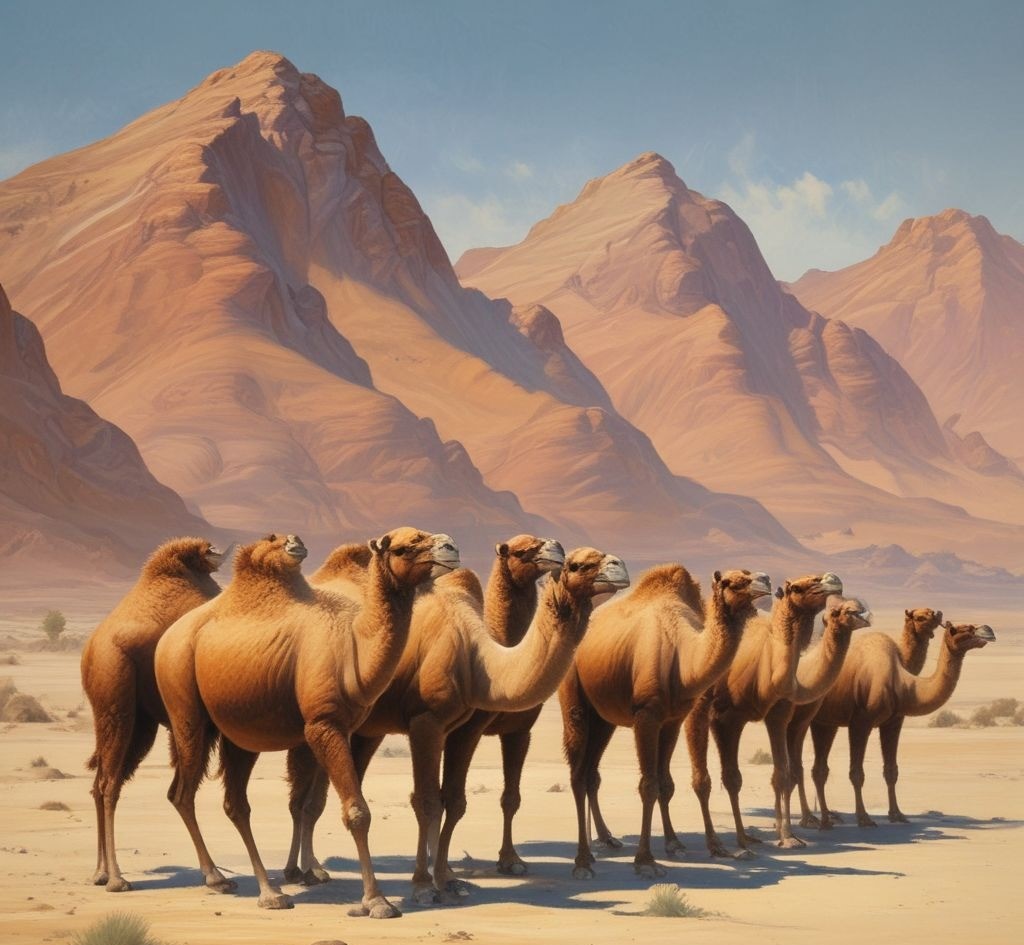🐫 All About the Bactrian Camel
The two-humped desert traveler that can survive the toughest climates! 🏜️🐫❄️
📖 Quick Overview
| Feature | Details |
|---|---|
| Animal Name | Bactrian Camel |
| Habitat | Cold deserts and dry steppes of Central Asia |
| Food | Grass, shrubs, and dry plants (Herbivore) |
| Group Name | Caravan or Herd |
| Baby Name | Calf |
| Special Skill | Stores fat in its humps to survive extreme conditions |
| Danger Level | Critically Endangered (wild ones) 🔴 |

🌟 What Is a Bactrian Camel?
The Bactrian Camel is a large, strong animal with two humps on its back (unlike the one-humped Dromedary camel)!
It has:
- Two fat-filled humps (not water!)
- Thick fur to survive cold winters
- Wide, padded feet for walking on sand and snow
- Long eyelashes and closable nostrils to block out dust
These camels are champions of tough places!
📍 Where Do Bactrian Camels Live?
Bactrian camels live in the harsh deserts and steppes of Central Asia.
🗺️ Found in:
- Mongolia
- China
- Kazakhstan
- Parts of Russia and Iran
🏜️ Habitat:
- Rocky deserts
- Dry grasslands
- Windy, icy mountains
They can handle blazing heat and freezing cold—from +100°F to −40°F!
🍽️ What Do Bactrian Camels Eat?
These tough animals are herbivores that can eat almost anything green (or even salty or thorny!).
🍴 Favorite foods include:
- Dry grass and shrubs
- Thorny plants
- Leaves and twigs
- Saltbush and other desert plants
They can go days without water, then drink up to 30 gallons at once!
👨👩👧👦 Family and Groups
Bactrian camels live in small groups called caravans or herds.
👶 Baby Camel = Calf
Moms carry babies for over 13 months!
Calves can stand within hours and stay close to mom.
💪 Brilliant Bactrian Camel Powers
- Store fat in their humps for energy
- Grow thick winter coats, which they shed in summer
- Can travel 30 miles a day in harsh terrain
- Close their nostrils to block sand
- Walk easily across hot deserts and frozen lands
💡 Fun Facts About Bactrian Camels
- The name “Bactrian” comes from ancient Bactria in Central Asia
- Their humps get droopy when they’re low on energy
- Wild Bactrian camels can drink salty water no other animal can!
- Domesticated Bactrians have helped humans for thousands of years
- They can survive on little food and water for weeks
🛑 Are Bactrian Camels in Danger?
Yes. 🟥 Wild Bactrian Camels are Critically Endangered due to:
- Habitat loss and mining
- Competition with livestock
- Poaching and water scarcity
Domesticated ones are not endangered, but wild Bactrians need protection.
💚 How Can We Help?
- Support groups protecting endangered species
- Learn about desert wildlife and ecosystems
- Respect nature while traveling in desert areas
- Spread awareness about wild camel conservation!
✏️ Activity: Make a Humpy Camel Hat!
🎨 Use construction paper and tape to:
- Shape a camel headband with two humps
- Add ears, eyes, and a big smile
- Pretend to trek through the desert and name your camel!

✅ Summary
| 🗂️ Category | 🐫 Bactrian Camel |
|---|---|
| Type | Mammal |
| Diet | Herbivore (grass, dry shrubs, thorny plants) |
| Habitat | Cold deserts and dry grasslands of Central Asia |
| Group | Caravan or Herd |
| Special Skill | Two fat-storing humps and extreme climate survival skills |
| Danger Level | Critically Endangered (wild camels) 🔴 |